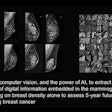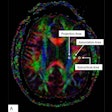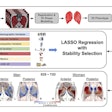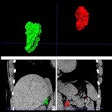More in Home
Image-only AI model improves breast cancer risk assessment
November 26, 2025
Brain MRI reveals pro fighters' risk of waste clearing system damage
November 26, 2025
Electrical bone stimulation may improve bone health in women
November 25, 2025
Use precontrast, low attenuation CT to better identify liver cancer
November 25, 2025
MRgFUS opens blood-brain barrier for chemotherapy
November 25, 2025
Does the shape of our buttocks signal diabetes?
November 25, 2025
Imaging biomarker emerges as chronic stress measure
November 25, 2025
New SPECT/CT tracer visualizes distribution of ALS drug
November 25, 2025
Your network doesn't matter anymore
November 25, 2025
How are imaging modalities portrayed in movies?
November 24, 2025
Page 1 of 186
Next Page



















